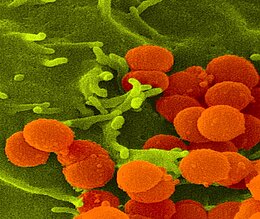P03
Analysis of the functional relevance of sphingomyelinases and ceramide in meningococcal pathogenesis
Alexandra Schubert-Unkmeir1 and Markus Sauer2
1Institute of Hygiene and Microbiology, University of Würzburg, Josef-Schneider-Str. 2, 97080 Würzburg, Germany
2Dept. of Biotechnology and Biophysics, University of Würzburg, Am Hubland, 97074 Würzburg, Germany
Overview:
Sphingolipid-enriched membrane microdomains contribute to a variety of cellular processes, including signal transduction and vesicle trafficking. Interestingly, a number of pathogens exploit the endocytic properties of Sphingolipid-enriched membrane microdomains to enter into host cells. In particular, Pseudomonas aeruginosa, Neisseria gonorrhoeae and Staphylococcus aureus have been shown to explore ceramide-enriched membrane platforms for their uptake. The significance of sphingolipid-enriched membrane microdomains in N. meningitidis pathogenesis is so far unknown. Initial experiments of our group with a serogroup B isolate (MC58) support an entirely novel role of ASM also in the N. meningitidis entry process suggesting that ceramide and ceramide-enriched membrane platforms generated upon SMase activation play a significant role in meningococcal uptake and pathogenesis.
The central aims of our project are to define
1. the role of ceramide-enriched platforms in N. meningitidis adhesion and invasion process and dissect the role of known uptake receptors in ceramide-enriched platform,
2. the role of SMAses in activation of signaling molecules and cytoskeletal reorganisation in response to N. meningitidis infection,
3. the meningococcal factor(s) that activate(s) ASMase activity as well as differences in the activation potential of ASMase activity of N. meningitidis strains belonging to different clonal complexes (cc) and
4. dissect the role of ceramides in the organization of ‘cortical plaques’.






